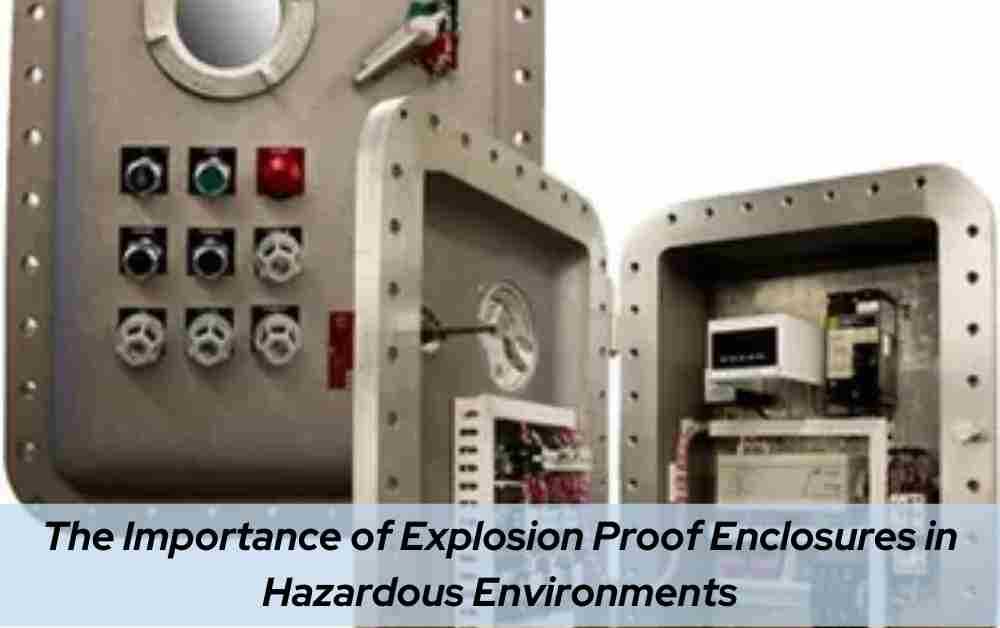Introduction
When working in hazardous environments where flammable gases, vapors, or dust pose potential risks, safety becomes a top priority. Explosion proof enclosures play a pivotal role in ensuring the well-being of both personnel and equipment in such settings. In this guide, we’ll delve into the significance of these safety components, breaking down the importance without delving into complex technicalities.
What Makes Explosion-Proof Enclosures Essential?
Grasping the Basics
At its core, an explosion-proof enclosure is like a protective shield designed to prevent explosions from turning into disasters. These enclosures are crafted to contain internal explosions, stopping flames and sparks from igniting the surrounding hazardous atmospheres.
How They Work
- Containment Principle: Picture it as a safety net – if there’s an internal explosion, the enclosure’s robust construction ensures that it stays within, averting any potential disaster.
- Preventing Ignition: These enclosures are designed with materials and features that eliminate ignition sources, actively minimizing the risk of explosions in hazardous environments.
The Significance in Hazardous Areas
Breaking Down Hazardous Areas
To truly grasp why explosion-proof enclosures matter, let’s understand the concept of hazardous areas. These are spaces where flammable substances can turn a small spark into a significant hazard. To manage this, these areas are classified into categories to guide safety measures.
Categories of Hazardous Areas
- Class I (Gas): Environments with flammable gases or vapors, often found in places like oil refineries.
- Class II (Dust): Areas with combustible dust particles, such as those found in flour mills.
- Class III (Fiber): Spaces with easily ignitable fibers, common in places like textile mills.
Choosing the Right Enclosure for Your Needs
Tailoring Safety Solutions
Selecting the right explosion-proof enclosure involves understanding the unique needs of your environment. Different types cater to various applications, providing a safety solution that suits your specific requirements.
Types of Explosion-Proof Enclosures
- Flameproof Enclosures: Perfect for containing explosions and stopping flames from escaping. Typically used in areas with flammable gases.
- Increased Safety Enclosures: Focus on preventing sparks or arcs that might ignite surrounding atmospheres. Ideal for areas with a high risk of sparking.
- Intrinsic Safety Enclosures: Aimed at limiting electrical energy within safe levels, often used in environments with potential electrical malfunctions.
The Importance of Proper Installation
Ensuring Effective Setup
Proper installation is crucial to the effectiveness of explosion-proof enclosures. Following best practices during installation guarantees optimal safety measures are in place.
Installation Guidelines
- Professional Installation: Entrust the installation process to qualified professionals with expertise in explosion-proof systems.
- Regular Maintenance: Schedule routine inspections to check for any signs of wear, tear, or damage. Prompt repairs or replacements are essential for maintaining the enclosure’s integrity.
Navigating Compliance with Standards
Meeting Safety Regulations
Ensuring that explosion-proof enclosures adhere to industry standards and certifications is vital for legal compliance and overall safety in hazardous environments.
Industry Standards
- ATEX Directive: European standards for equipment used in explosive atmospheres.
- UL Certification: Underwriters Laboratories certification, particularly significant in North America.
- IECEx Certification: International standards for explosive atmospheres, offering global acceptance.
Also read – The Ultimate Guide to Explosion Proof Enclosures: A Comprehensive Overview
Conclusion
In conclusion, the importance of explosion-proof enclosures in hazardous environments cannot be overstated. Whether you’re dealing with gases, combustible dust, or ignitable fibers, these enclosures provide a tailored safety solution for your unique needs. Understanding their basic principles, the types available, proper installation guidelines, and adherence to regulatory standards ensures that you’re making informed decisions for a safer working environment. Safety is paramount, and explosion-proof enclosures are your reliable allies in ensuring it in hazardous settings.
Note: read our next blog: Handcrafted Furniture: Elevating Your Home with Character

